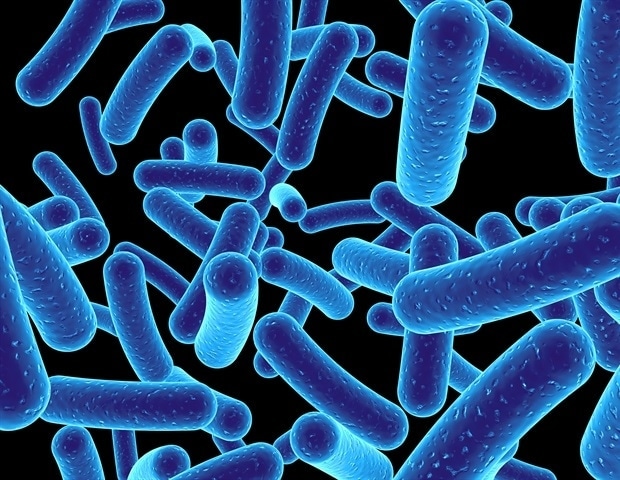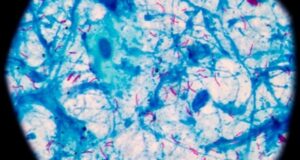
A researcher at the University of Arizona College of Medicine – Tucson received a $1.9 million grant from the National Institutes of Health to continue his research into uncovering the mysteries of copper – specifically, how it can be harnessed to kill harmful bacteria and other microorganisms.
We started using copper tens of thousands of years ago to cut down on bacterial infections. People used to store their food in copper pots, which helped cut down on spoilage. Copper doorknobs have been shown to cut down on hospital-acquired infections. We’re still finding more things it can do.”
Michael D.L. Johnson, PhD, associate professor of immunobiology
Johnson said he hopes one of these potential new uses could form the backbone of a next-generation antibiotic; however, to build a solid foundation for the pharmaceutical research, his lab aims to learn more about what makes copper toxic to bacteria in the first place. The research is being made possible by an R35 grant, which is reserved for scientists with outstanding research records and the potential to make major contributions to their fields.
Using Streptococcus pneumoniae as a model organism, Johnson and his team will attempt to learn what makes bacterial cells vulnerable to copper.
“It’s a pretty prominent pathogen. More than a million people die per year because of these bacteria,” he said, referring to the bacteria that can cause infections in the lungs, brain, nose and blood. “Our laboratory is interested in trying to figure out how it ticks. Our way of doing that is to understand how it gets its nutrition.”
The human body uses minerals such as iron and calcium, which we get from our diets, to keep bodily processes running. Bacteria are no different in that they need minerals to function, but copper, which is essential in the human diet, can be toxic to bacteria.
“There are certain minerals that bacteria don’t want in excess, and that’s where copper comes into play,” said Johnson, who is a member of the BIO5 Institute. “There are a lot of ways we can weaponize copper. We’re trying to study how our body uses copper as a mechanism to kill pathogens.”
Johnson believes that by flooding bacteria’s environment with excess copper, researchers may be able to trick them into building essential proteins with the wrong materials.
“Copper can displace iron, manganese or other metals and inactivate the protein,” he said. “It would be like me trying to start my wife’s car with my key. It doesn’t work.”
Johnson will build on his previous studies investigating how S. pneumoniae reacts to copper and complement parallel studies performed in his lab to learn more about copper as an antimicrobial. He said his goal is to untangle exactly what makes copper toxic to S. pneumoniae and use that information to draw conclusions about similar bacteria.
“All bacteria are different, but there are some mission-critical systems that are the same from bacteria to bacteria. How they process some of these metals is almost identical,” he said. “What I’m studying can be applied to other bacteria, but first we need to understand the basic mechanism of how these things work.”
Johnson said that while new antibiotics are slow to be developed and approved, antibiotic resistance is on the rise among pathogens, meaning that infections that were once easily cured with medicine could someday be deadly again. The Centers for Disease Control and Prevention considers antibiotic resistance a danger to public health, with drug-resistant S. pneumoniae classified as a “serious threat.”
“Bacteria are quite crafty. They will mutate to overcome antibiotics,” Johnson said.
“Our bodies have evolved to use copper to kill bacteria, and to this day, copper is still toxic. We want to take advantage of that to help people with life-threatening infections.”
This research is supported by the National Institute of General Medical Sciences, a division of the National Institutes of Health, under award no. R35GM128653.




